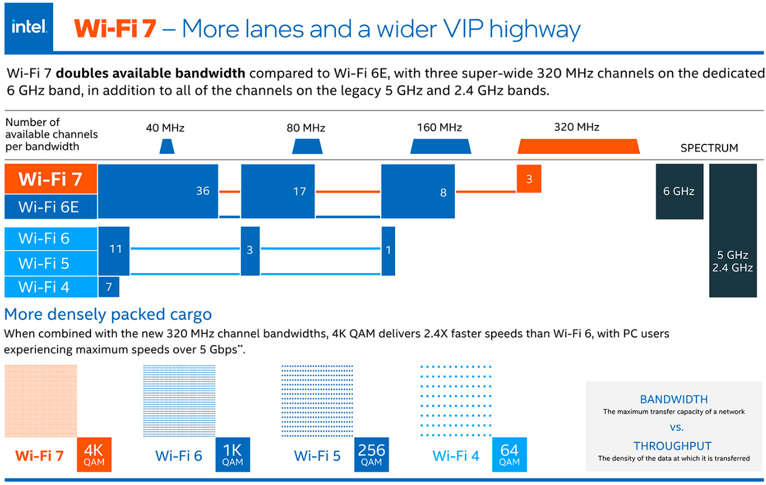|
|
|||||||||||||||||||||||||||
|
802.11be (WiFi 7)Wi-Fi 7, technically known as IEEE 802.11be, is the forthcoming wireless network standard. It builds upon the features introduced by Wi-Fi 6 and Wi-Fi 6E by substantially increasing bandwidth, supporting 320 MHz channels in the 6 GHz band. This enhancement effectively doubles the channel width compared to Wi-Fi 6/6E. The standard incorporates 4K Quadrature Amplitude Modulation (QAM), which allows for more data to be transmitted with each signal compared to the 1K QAM of Wi-Fi 6. It also introduces Multi-Link Operation (MLO), which enables simultaneous data transmission across multiple frequencies, improving throughput, reliability, and reducing latency.
Source : What Is Wi-Fi 7? - Intel
Highlights of WiFi 7 (802.11be) can be summarized as follows :
References :
YouTube
|
|||||||||||||||||||||||||||
